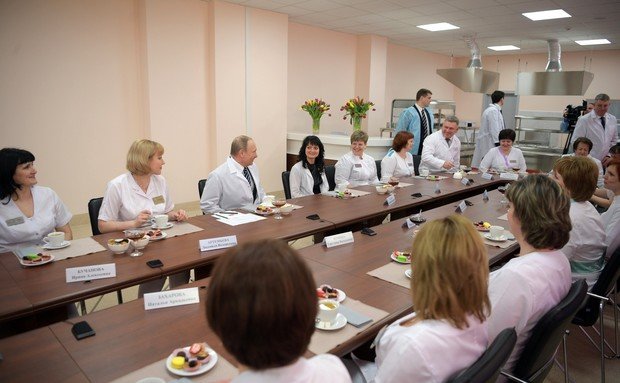Russian economy shows mixed results in February
Last month, key indicators of the Russian economy turned to be rather contradictory: retail sales plunged amid a sharp pre-election surge of real disposable income and low unemployment. A slowdown was also registered in industrial production, primarily manufacturing.
In February, Russian activity figures were generally a bit weaker than expected, reports bne IntelliNews adding that even so the economy is likely to grow by about 1,5%-1,8% in the first quarter. Last month, industrial production slowed down and showed only a 1,5% increase y/y after a 2,9% growth in January. ''The slowdown was driven mainly by the manufacturing sector. That tallies with some of the surveys, notably the manufacturing PMI, which also weakened last month,'' Capital Economics research consultancy commented. Other sectors were less volatile, for example, the agricultural sector picked up to 2,6% y/y from 2,5% in the previous month, while the construction sector contracted by 0,2%.
Surprisingly, retail sales weakened to a seven-month low of 1,8% y/y in February. This was well below the January's result of 2,8% and almost twice lower than the market expected. At the same time, other indicators such as motor vehicle sales point to strong consumer spending last month, Capital Economics claims. ''It's not quite clear what's behind the slowdown in the retail sector, but our sense is that it should be temporary.'' The consultancy considers that positive trends, such as a decrease in unemployment from 5,2% to 5%, ''should feed through into stronger retail spending''. Actually, the last month's seasonally-adjusted unemployment rate has been the lowest since March 2014.

A significant growth in real disposable income (4,4% y/y in February) was probably caused by an indexation of public sector wages before the presidential elections. Rosstat reported that in January 2018, nominal salaries in healthcare grew by 28% y/y (compared to 9% a year ago). In education, an increase in nominal salaries totalled 18% (7% in January 2017). ''The federal budget statistics confirm this generous spending: healthcare expenditures increased 63% y/y in 2M18, education spending rose 36% y/y for the same period, and spending in the national economy jumped 53% y/y,'' said Natalia Orlova, chief economist at Alfa Bank. The strong acceleration in expenditure growth can pose a challenge for budget stability this year, considers the economist.
However, a steady recovery in real disposable incomes should energise sagged retail sales, which had been recovering all last year. As for retail lending, it increased by 14,6% y/y in February. According to Orlova, the continuing increase in borrowing is an additional driver for consumption, which is expected to strengthen in the coming months. In corporate lending, last months' strong demand for ruble-denominated loans has evaporated or at least paused. This could be due to weak industrial production growth, or it may mean that the spike was caused mostly by sanctions fears.